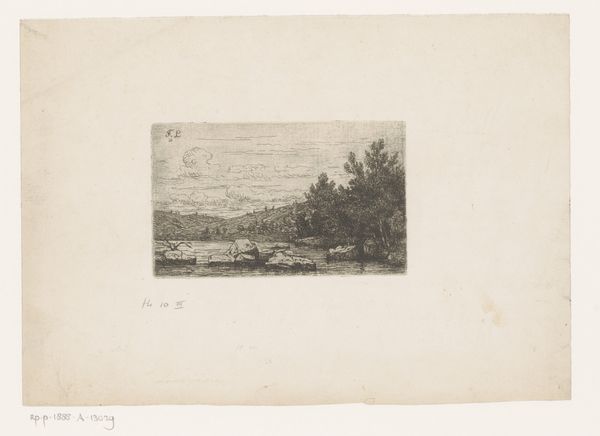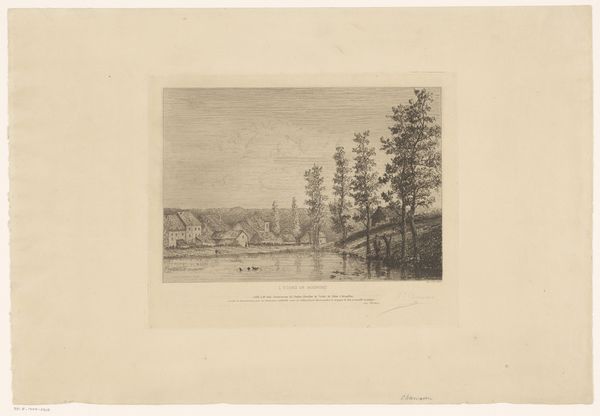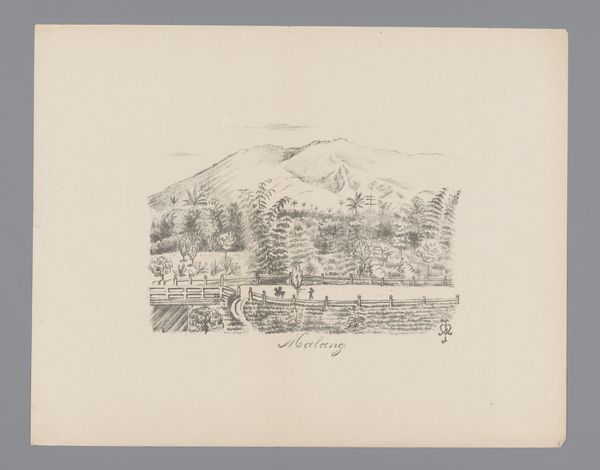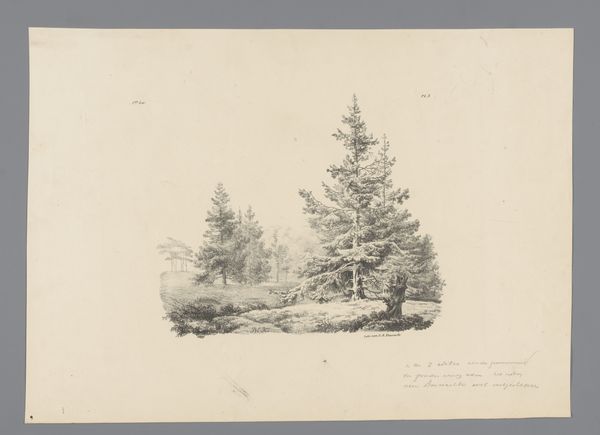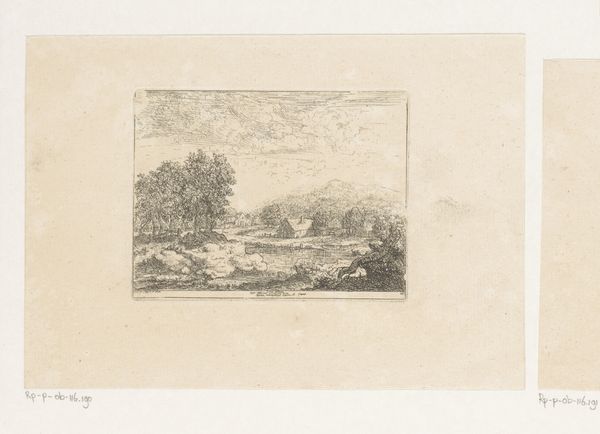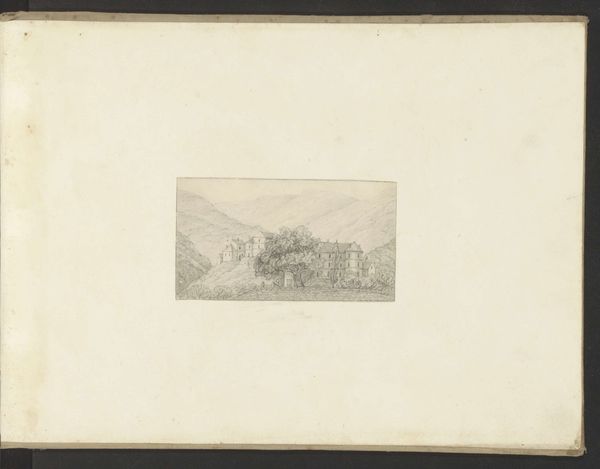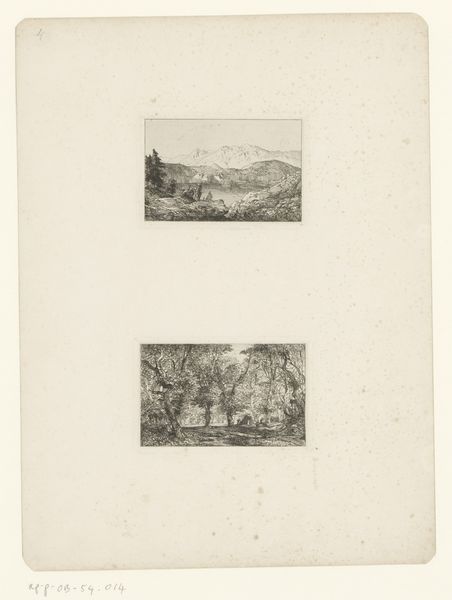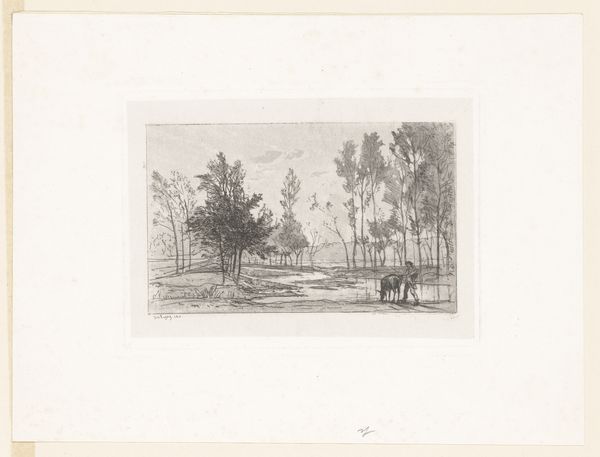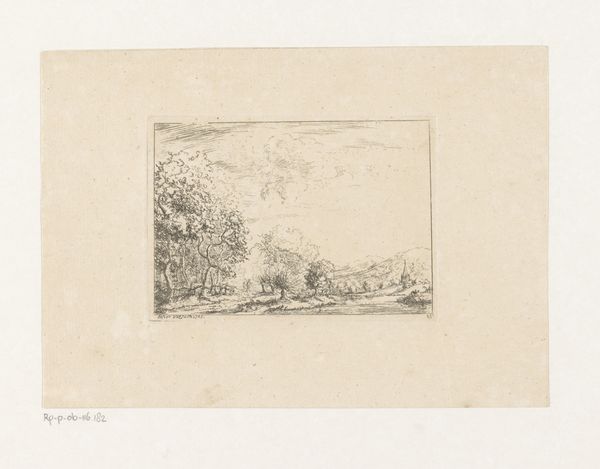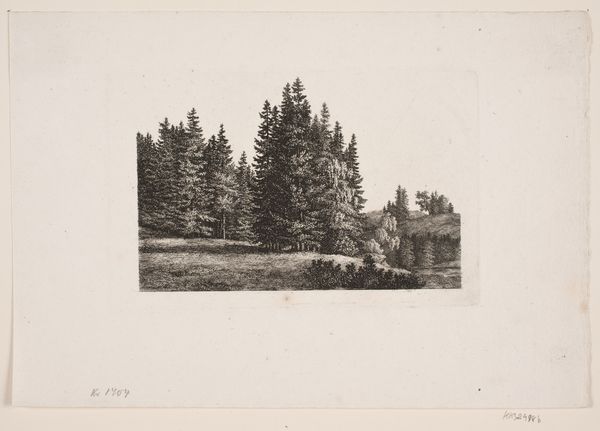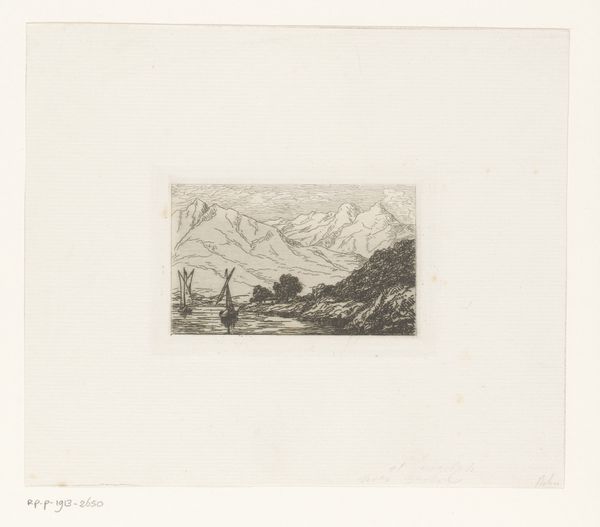
#
aged paper
#
light pencil work
#
old engraving style
#
river
#
personal sketchbook
#
ink drawing experimentation
#
pen-ink sketch
#
ink colored
#
sketchbook drawing
#
watercolour illustration
#
sketchbook art
Dimensions: height 132 mm, width 187 mm
Copyright: Rijks Museum: Open Domain
Curator: This is a pen-and-ink sketch entitled "Gezicht op Brumagne en Marche-les-Dames," likely created sometime between 1815 and 1830, by Otto Baron Howen. Editor: It feels like a captured moment, very still. The meticulous use of fine lines creates a sense of tranquility and, honestly, a kind of loneliness. Curator: Indeed, Howen has demonstrated masterful control over line work here, particularly in depicting atmospheric perspective. Observe how the intensity of the ink strokes diminishes with distance, lending depth to the scene. It's a rather typical Romantic style, but with an incredibly subtle approach. Editor: What interests me is how such a seemingly objective rendering might also betray certain power dynamics. The scene captures the idyllic quality of nature, and perhaps a desire to reinforce the appeal of such environments to viewers back in the urban sphere. Do we know who the artist might have intended as the audience? Curator: Very astute point. Though not conclusively known, Howen, given his aristocratic background, most probably circulated his work within his own social circle. So this landscape also functioned as a social performance of class. Note, the composition draws your eyes into the village scene, offering a picturesque view meticulously framed by trees along the riverside. Editor: Yes, I’m wondering how the art market at the time might have cultivated such precise yet portable artistic works? What sociopolitical currents encouraged that? I imagine the cultural elite might have viewed artworks depicting villagescapes as emblematic of certain national pride too. Curator: Undoubtedly! Artistic production during this time was frequently commissioned and acquired to communicate not only personal taste, but to propagate broader ideas of regional beauty. Its lines echo sentiments prevalent within growing national identities during the 19th Century. It becomes quite complicated how it intersects personal aesthetic value and something larger! Editor: Exactly, and something of the cost of that sentiment is perhaps visible in the subdued, melancholic character of this drawing...I find myself pondering it further now! Curator: An intriguing perspective. It has shifted my reading away from technique alone and has given me fresh angles regarding landscape, patronage, and sentiment.
Comments
No comments
Be the first to comment and join the conversation on the ultimate creative platform.

